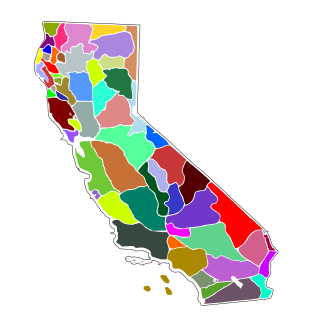Reasons of the court
Justice Cory, writing for the majority, held that the appeals of Badger and Kiyawasew should be dismissed but Ominayak's appeal should be allowed and a new trial should be directed.
The Treaty, Cory found, granted the right to "pursue their usual vocations of hunting, trapping, and fishing", which was limited by geography and the right of the government to conserve Wildlife.
Cory gave several principles in interpreting treaties:
- a treaty represents an exchange of solemn promises between the Crown and the various Indian nations.
- the honour of the Crown is always at stake; the Crown must be assumed to intend to fulfil its promises.
- any ambiguities or doubtful expressions must be resolved in favour of the Indians and any limitations restricting the rights of Indians under treaties must be narrowly construed.
- the onus of establishing strict proof of extinguishment of a treaty or aboriginal right lies upon the Crown.
Cory then turned to the issue of the NRTA. He found that it extinguished the right to hunt commercially but not the right to hunt for food.
When interpreting any treaties, they must be given their natural meaning as understood by the Indians at the time that they were signed. The limitation of the hunting treaty should be based on visible, incompatible land use. On this basis, the appeals for Badger and Kiyawasew must be dismissed as they were hunting where it was visibly incompatible with the land use.
Cory considered whether the Wildlife Act, which required hunting licenses, violated their aboriginal right to hunt. He found that it did violate their rights and could not be justified under the Sparrow test.

R v Sparrow, [1990] 1 S.C.R. 1075 was an important decision of the Supreme Court of Canada concerning the application of Aboriginal rights under section 35(1) of the Constitution Act, 1982. The Court held that Aboriginal rights, such as fishing, that were in existence in 1982 are protected under the Constitution of Canada and cannot be infringed without justification on account of the government's fiduciary duty to the Aboriginal peoples of Canada.
Section 35 of the Constitution Act, 1982 provides constitutional protection to the indigenous and treaty rights of indigenous peoples in Canada. The section, while within the Constitution of Canada, falls outside the Canadian Charter of Rights and Freedoms. The section does not define the term "aboriginal rights" or provide a closed list; some examples of the rights that section 35 has been found to protect are fishing, logging, hunting, the right to land and the right to enforcement of treaties. There remains a debate over whether the right to indigenous self-government is included within section 35. As of 2006 the Supreme Court of Canada has made no ruling on the matter. However, since 1995 the Government of Canada has had a policy recognizing the inherent right of self-government under section 35.

Delgamuukw v British Columbia, [1997] 3 SCR 1010, also known as Delgamuukw v The Queen, Delgamuukw-Gisday’wa, or simply Delgamuukw, is a ruling by the Supreme Court of Canada that contains its first comprehensive account of Aboriginal title in Canada. The Gitxsan and Wet’suwet’en peoples claimed Aboriginal title and jurisdiction over 58,000 square kilometres in northwest British Columbia. The plaintiffs lost the case at trial, but the Supreme Court of Canada allowed the appeal in part and ordered a new trial because of deficiencies relating to the pleadings and treatment of evidence. In this decision, the Court went on to describe the "nature and scope" of the protection given to Aboriginal title under section 35 of the Constitution Act, 1982, defined how a claimant can prove Aboriginal title, and clarified how the justification test from R v Sparrow applies when Aboriginal title is infringed. The decision is also important for its treatment of oral testimony as evidence of historic occupation.

R v Van der Peet, [1996] 2 S.C.R. 507 is a leading case on Aboriginal rights under section 35 of the Constitution Act, 1982. The Supreme Court held that Aboriginal fishing rights did not extend to commercial selling of fish. From this case came the Van der Peet test for determining if an Aboriginal right exists. This is the first of three cases known as the Van der Peet trilogy which included R v NTC Smokehouse Ltd and R v Gladstone.

St Catharines Milling and Lumber Co v R was the leading case on Aboriginal title in Canada for more than 80 years. The Judicial Committee of the Privy Council, affirming a ruling by the Supreme Court of Canada, held that Aboriginal title over land was allowed only at the Crown's pleasure, and could be taken away at any time. This case, involving Ojibway Treaty No. 3 which had never been previously litigated before any court, is a leading decision in Canada on the differences between the division of legislative powers and property rights under the Constitution of Canada.

R v Marshall; R v Bernard 2005 SCC 43 is a leading Aboriginal rights decision of the Supreme Court of Canada where the Court narrowed the test from R. v. Marshall for determining the extent of constitutional protection upon Aboriginal practices. The Court held that there was no right to commercial logging granted in the "Peace and Friendship treaties of 1760", the same set of treaties where the right to commercial fishing was granted in the R. v. Marshall decision. This decision also applied and developed the test for aboriginal title from Delgamuukw v British Columbia.

R v Pamajewon, [1996] 2 S.C.R. 821, is a leading Supreme Court of Canada decision on Aboriginal self-government under section 35(1) of the Constitution Act, 1982. The Court held that the right to self-government, if it exists, is subject to reasonable limitations and excluded the right to control high-stakes gambling.

R v Gladstone, [1996] 2 S.C.R. 723 is a leading Supreme Court of Canada decision on non-treaty Aboriginal rights under section 35 of the Constitution Act, 1982. The Court modified the Sparrow test for the extinguishment of Aboriginal rights to give more deference to the government in protecting commercial fishing rights.

Kruger v R, [1978] 1 S.C.R. 104, was a decision by the Supreme Court of Canada on the relationship between the Indian Act and provincial game laws. The Indian Act is a federal law enacted under the British North America Act, 1867, which gives jurisdiction over Aboriginals to the federal government. The Court found that the Indian Act's statement that provincial laws may apply to Aboriginal peoples in Canada as long as they apply to other people protects laws even if these laws affect Aboriginals more than others.
R. v. Jim (1915) 26 C.C.C. 236, was a decision by the British Columbia Supreme Court on Aboriginal ("Indian") hunting and provincial game laws. The Court found that Aboriginal hunting on Indian reserves is primarily federal jurisdiction, relating to section 91(24) of the British North America Act, 1867 which assigns "Indians, and Lands reserved for the Indians" to the federal government.

Aboriginal title is a common law doctrine that the land rights of indigenous peoples to customary tenure persist after the assumption of sovereignty under settler colonialism. The requirements of proof for the recognition of aboriginal title, the content of aboriginal title, the methods of extinguishing aboriginal title, and the availability of compensation in the case of extinguishment vary significantly by jurisdiction. Nearly all jurisdictions are in agreement that aboriginal title is inalienable, and that it may be held either individually or collectively.

The Teme-Augama Anishnabai (TAA) is the Aboriginal (Anishinaabe) community of the Temagami First Nation. The TAA have trapped and hunted animals in the Temagami region of Canada for over 5,000 years. Bear Island on Lake Temagami is home to the Aboriginal community.
Gary Potts was a chief of the Temagami First Nation and the Teme-Augama Anishnabai in Temagami, Ontario, Canada. He was chief in August 1973 when the Temagami Land Caution began with land claims being filed with title offices to prevent development on Crown land.
Treaty rights are rights conferred through the signature of a treaty, e.g. the Svalbard Treaty.
R. v. Powley2003 SCC 43, commonly called the Powley ruling, is a Supreme Court of Canada case defining Métis Aboriginal rights under section 35(1) of the Constitution Act, 1982.
Menominee Tribe v. United States, 391 U.S. 404 (1968), is a case in which the Supreme Court ruled that the Menominee Indian Tribe kept their historical hunting and fishing rights even after the federal government ceased to recognize the tribe. It was a landmark decision in Native American case law.
Seneca Nation of Indians v. Christy, 162 U.S. 283 (1896), was the first litigation of aboriginal title in the United States by a tribal plaintiff in the Supreme Court of the United States since Cherokee Nation v. Georgia (1831). It was the first such litigation by an indigenous plaintiff since Fellows v. Blacksmith (1857) and its companion case of New York ex rel. Cutler v. Dibble (1858). The New York courts held that the 1788 Phelps and Gorham Purchase did not violate the Nonintercourse Act, one of the provisions of which prohibits purchases of Indian lands without the approval of the federal government, and that the Seneca Nation of New York was barred by the state statute of limitations from challenging the transfer of title. The U.S. Supreme Court declined to review the merits of lower court ruling because of the adequate and independent state grounds doctrine.

The Marshall Court (1801–1835) issued some of the earliest and most influential opinions by the Supreme Court of the United States on the status of aboriginal title in the United States, several of them written by Chief Justice John Marshall himself. However, without exception, the remarks of the Court on aboriginal title during this period are dicta. Only one indigenous litigant ever appeared before the Marshall Court, and there, Marshall dismissed the case for lack of original jurisdiction.
Oregon Department of Fish and Wildlife v. Klamath Indian Tribe, 473 U.S. 753 (1985), was a case appealed to the US Supreme Court by the Oregon Department of Fish and Wildlife. The Supreme Court reversed the previous decisions in the District Court and the Court of Appeals stating that the exclusive right to hunt, fish, and gather roots, berries, and seeds on the lands reserved to the Klamath Tribe by the 1864 Treaty was not intended to survive as a special right to be free of state regulation in the ceded lands that were outside the reservation after the 1901 Agreement.

Aboriginal title in California refers to the aboriginal title land rights of the indigenous peoples of California. The state is unique in that no Native American tribe in California is the counterparty to a ratified federal treaty. Therefore, all the Indian reservations in the state were created by federal statute or executive order.






